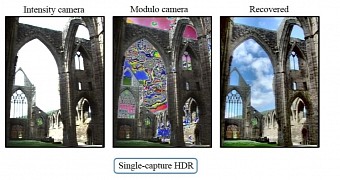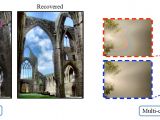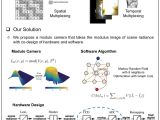A team of MIT researchers led by Hang Zhao, working in the Camera Culture Group at MIT Media Lab, developed a new type of camera that can take single-shot images without exposing the captured imagery.
The new camera, called a modulo camera, uses a novel software algorithm developed specifically for this project that allows a camera's light sensor to store more information than it was designed for.
This enables the camera to record more information about the ambient's lighting conditions, without ignoring information when the sensor is full, which often results in a photo which is often too dark or too light.
The modulo camera light sensor is like a bottomless bucket
The concept behind this technology is quite simple to grasp if explained properly (which the video below also does). If we think of a camera's light sensor as a bucket and the light as being rain, a normal camera would ignore the lighting details (rain drops) once the bucket is filled, spilling information over its edge and ignoring it when the shutter closes.
A modulo camera, with its modified light sensor, once full, will spill its content in the camera's memory and start to refill with new information again, doing the same thing over and over until the shutter closes.
This lighting data is then reassembled and processed by the researchers' algorithm, recovering important color details which would have been lost by a normal camera.
This produces images with more accurate lighting details, photos that look like the original sceneries and objects a photographer wanted to record, and not of an overexposed mess of white or black fog hanging over the photo.
An alternative to classic HDR photography
While this new camera type is still under testing at the MIT Media Lab, you can see its potential and practicality even now.
The new camera with its ingenious algorithm can effectively replace HDR photography, allowing photographers to have clear photos from one shot, instead of needing to take multiple shots from different angles and with different light exposures, and then combining them into one image using various HDR post-processing tools.
Besides improving image quality in regular cameras, this new algorithm can also be used in other tech fields where cameras are used on a regular basis, like for example Google's self-driving cars, industrial robots, face recognition software, surveillance systems, and the movie industry, if the algorithm and the light sensor can be adapted to video cameras.

 14 DAY TRIAL //
14 DAY TRIAL // 



